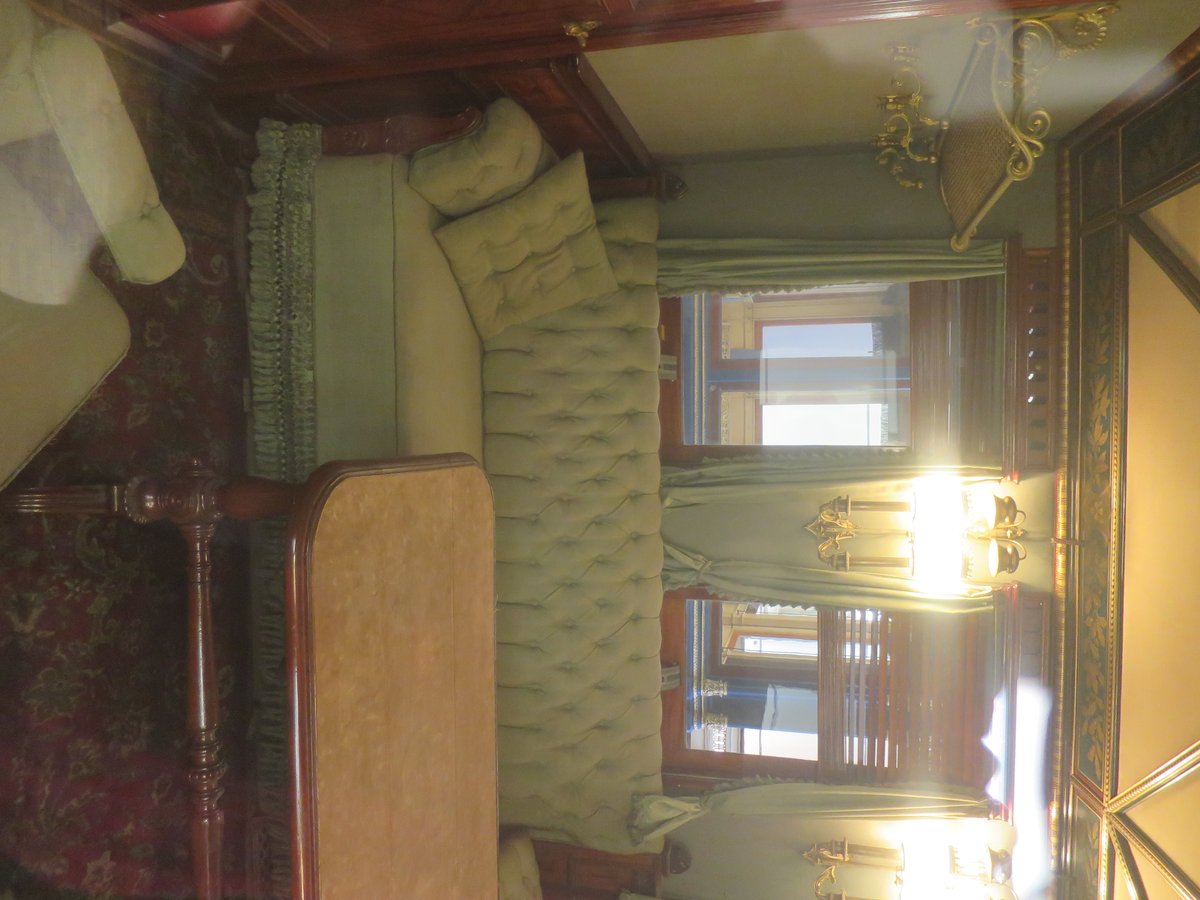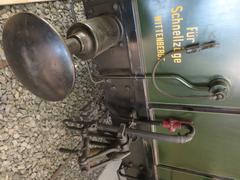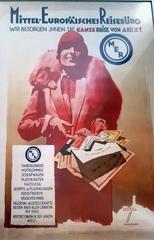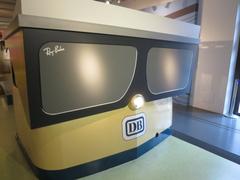
Nuremberg Transport Museum: Visiting Hours, Tickets, and Guide to Nuremberg Historical Sites
Date: 14/06/2025
Introduction to the Nuremberg Transport Museum
The Nuremberg Transport Museum (Verkehrsmuseum Nürnberg), housing the DB Museum, stands as a monument to Germany’s pioneering railway legacy and ranks among Europe’s foremost transport museums. Established in 1899 during the 50th anniversary celebrations of Germany’s first railway—the Ludwig Railway connecting Nuremberg and Fürth—the museum invites visitors on a comprehensive journey through over 200 years of railway innovation. As the world’s oldest railway museum, it documents not only the evolution from steam to high-speed rail but also the social and political dimensions of railway history, including the National Socialist era and postwar division.
Centrally located in Nuremberg, the museum features an extensive collection of historic locomotives, rolling stock, interactive displays, multimedia installations, and family-friendly attractions like train simulators and the “Kinderland” play area. Its accessibility, guided tours, and integration with Nuremberg’s vibrant cultural scene make it a must-visit for history enthusiasts, railway fans, families, and casual travelers. Whether you’re drawn to iconic artifacts like the “Adler” steam locomotive or eager to explore modern sustainable transport, this guide offers essential information on visiting hours, ticket prices, accessibility, and nearby attractions.
For the latest updates and visitor details, consult the official Nuremberg Transport Museum website and explore additional resources on European railway museums at Europe Revealed.
Table of Contents
- Introduction
- Origins and Foundation
- Historical Development
- Notable Exhibits and Collections
- Practical Visitor Information
- Nearby Attractions and Cultural Integration
- Frequently Asked Questions (FAQ)
- Conclusion
- References
Origins and Foundation
Founded in 1899, the Nuremberg Transport Museum was created to celebrate the achievements of the Royal Bavarian State Railways and to commemorate the opening of Germany’s first railway line in 1835 (Europe Revealed). The museum’s mission from its inception has been the preservation, documentation, and public display of Germany’s railway heritage.
Historical Development
Growth and Expansion
Initially, the collection focused on the technical innovations and milestones of Bavarian and German railways, featuring original locomotives, rolling stock, and engineering artifacts. The museum documented the crucial transition from steam to electric and diesel propulsion, reflecting broader trends in German industrialization.
War-Time and Postwar Periods
Despite suffering damage during World War II, the museum managed to preserve many core artifacts through careful relocation and restoration. Postwar reconstruction led to its integration into Deutsche Bundesbahn in 1953, broadening its mandate to encompass the railway history of both East and West Germany after reunification.
Modernization
The late 20th century saw the introduction of interactive and educational exhibits, making the museum more engaging for a diverse audience. In 1996, the institution became the DB Museum under Deutsche Bahn AG, expanding its exhibitions to include high-speed rail and sustainable transport innovations.
Notable Exhibits and Collections
- Replica of the Adler Locomotive: A fully functional recreation of Germany’s first steam locomotive, originally built in 1835.
- Historic Rolling Stock: Including royal Bavarian carriages, Prussian steam engines, early diesel and electric locomotives, and modern ICE train cars.
- Model Railway Display: One of Europe’s largest, featuring 500 meters of track and dynamic demonstrations.
- Interactive Science and Driving Simulators: Hands-on exhibits explaining railway technology and operations.
- Themed Permanent and Temporary Exhibitions: Covering railway architecture, uniforms, the role of women in rail transport, and the impact of railways during WWII—including sensitive topics such as the Holocaust (Destination WWII).
Practical Visitor Information
Opening Hours
- Tuesday to Sunday: 10:00 AM – 5:00 PM
- Closed: Mondays and major public holidays (Christmas, New Year’s Day)
- Note: Open-air sections are generally available April–October. Always check the official website for seasonal changes or special events.
Ticket Prices
- Adults: €9
- Children (6–17): €5
- Family (2 adults + up to 4 children): €18
- Reductions: For students, seniors, and groups
- Special Offers: Discounts with valid DB/VGN tickets, the Nürnberg City Card, or NÜRNBERG CARD + FÜRTH (Tourismus Nürnberg)
Getting There
- Address: Lessingstraße 6, 90443 Nuremberg
- By Public Transport: Short walk from Nuremberg Hauptbahnhof (main station); U-Bahn Opernhaus (U2/U3 lines) is closest (European Traveler).
- Parking: Limited; public transport is recommended.
Accessibility
- Wheelchair-accessible entrances, elevators, and restrooms
- Audio guides and exhibit materials in multiple languages
- Support for visitors with disabilities upon request
Visitor Services
- Museum shop with railway-themed gifts
- On-site café
- Guided tours (in German and English, check schedule)
- Lockers for personal belongings
- Free Wi-Fi in public areas
Special Events
- Steam train rides, model railway demonstrations, workshops, and lectures on railway history and technology
Nearby Attractions and Cultural Integration
- Central Location: Near Nuremberg’s Old Town, Germanisches Nationalmuseum, Toy Museum, and other landmarks (PlanetWare)
- Historic Tram Depot St. Peter: Explore over 140 years of local transport history (VAG Nuremberg)
- Combination Tickets: Available for municipal museums and attractions
- Dining: Numerous cafés and restaurants nearby
Frequently Asked Questions (FAQ)
Q: What are the museum’s opening hours?
A: Typically Tuesday–Sunday, 10:00 AM–5:00 PM. Verify on the official website.
Q: Are guided tours available in English?
A: Yes, but check availability and schedules at the ticket desk or online.
Q: Is the museum suitable for children?
A: Yes, with dedicated children’s areas and interactive exhibits.
Q: Is the museum wheelchair accessible?
A: Yes, fully accessible with lifts and adapted facilities.
Q: Can I buy tickets online?
A: Yes, advance purchase is recommended, especially during peak times.
Q: Are there discounts for public transport users?
A: Valid DB or VGN tickets provide admission discounts.
Q: When is the open-air section available?
A: Typically from April to October.
Practical Tips for Your Visit
- Plan 2–3 hours for a thorough visit, including both the DB Museum and Museum of Communication.
- Arrive early for model railway demonstrations and to avoid crowds.
- Combine visits with other Nuremberg historical sites for a full day itinerary.
- Check special events and temporary exhibitions on the official site.
- Photography is permitted but avoid flash and tripods in certain areas.
Conclusion
The Nuremberg Transport Museum offers a deep dive into German railway and communication history, blending iconic artifacts like the Adler locomotive with interactive, educational exhibits. Its commitment to accessibility, family-friendly features, and thoughtful curation of even the most challenging chapters in railway history makes it one of Nuremberg’s premier historical destinations. With extensive practical information on hours, tickets, and visitor services, the museum is highly accessible to all. Enhance your visit with the Audiala app for guided tours and audio content, and stay updated on new exhibitions and special events via social media.
Ready to explore German railway heritage?
Check the official museum website for up-to-date information, download the Audiala app for guided tours, and make the Nuremberg Transport Museum a highlight of your journey through Nuremberg’s rich historical landscape.
References
- This is a sample text. (Europe Revealed)
- This is a sample text. (Germany Travel)
- This is a sample text. (DB Museum)
- This is a sample text. (European Traveler)
- This is a sample text. (PlanetWare)
- This is a sample text. (Tourismus Nürnberg)


















































